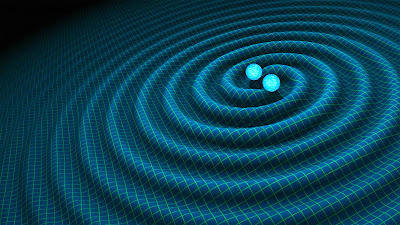The CUDA gravity simulator has reached the point where it has a simulation engine that can display a 1024-body simulation in real-time. (Check it out from the beginning.) In getting to that point, we hit the limit on the number of threads that can be started in a single thread block in CUDA, but of course, that is not the end of the story. We can still increase the number of bodies in the simulation further, and after we've explored how to do that, we'll experiment with the parameters of the simulation to see if we can get anything interesting going that looks like a star cluster. Spoiler alert: we can, and we will.
Lucid Mesh
Musings on software development, technology, and their interconnections with a programmer's everyday life
Search This Blog
Playing with Gravity to Learn CUDA: An N-Body Simulation
Now that we have a working simulation engine and a real-time display of a running simulation, it's time to see what we can do with this gravity simulator we've been building in CUDA. We'll start off with a complete simulation of the solar system to see if we can get a reasonable multi-body system simulating correctly. Then we'll move on to filling up the 640 cores on my GeForce GTX 1050 card to make full use of the GPU and see where the base limits are for this simulator. This should be fun.
Playing with Gravity to Learn CUDA: Simulation Display
We're building a gravity simulation on a GPU using CUDA, and last time we actually got a working simulator running for a 2-body system. That was exciting, but there were some drawbacks, namely the printout-copy-paste-to-spreadsheet-and-graph way of visualizing the simulation. In this post we're going to remedy that issue with a simulation display that shows the position of the bodies graphically while the simulation is running and that also runs on the graphics card alongside the simulation. We'll even make the position buffer multipurpose so that we can calculate the positions directly into this buffer, and then turn around and draw those positions into a window from the same buffer. No copying required, not even automated copying.
Making this display for the gravity simulator turned out to be more difficult than I thought because I haven't programmed in OpenGL since the graphics course I took in college, and I've certainly never done any OpenGL-CUDA interop before. I managed to pull something together by leaning heavily on the N-Body sample project that's part of the nVidia CUDA sample projects. This sample project is also a gravity simulator, but the underlying simulation engine is substantially different than the one we've built so far. Even so, I was able to use the renderer without any modifications. Let's see how it works.
Playing with Gravity to Learn CUDA: A 2-Body Simulation
In the last post of this series on learning CUDA through building a gravity simulation, we didn't actually do any CUDA. We focused on defining gravity and figuring out how we were going to actually simulate it with practical equations. Now it's time to put those equations to work and see if we can come up with a functioning simulation that uses CUDA. We'll start with the simple 2-body problem of the Earth orbiting around the Sun, and see if we can keep the Earth in orbit.
Playing With Gravity to Learn CUDA: A Fundamental Force
We started out this series on learning CUDA by diving in and writing a couple CUDA programs that we then got up and running on an nVidia graphics card. That was a great start that gave us an immediate feeling of accomplishment, but to keep advancing toward our goal of building a multi-body gravity simulation, we're going to have to take a break from CUDA and make sure we understand gravity a bit more. Gravity can be modeled at different levels of complexity, so we'll want to decide at what level we want to model it. We'll certainly start simple, but it's still good to know enough about gravity to know where we could go if we wanted and where it's not worth it to explore.
Playing With Gravity to Learn CUDA: Hello, World
I have been interested in CUDA for a long time, and while I've read a few books on CUDA, I have not actually gotten my hands dirty with it, yet. It's time to remedy that situation with this new blog series where I explore CUDA programming with a purpose. The end goal is to create a CUDA program that runs a scalable, multi-body gravity simulation on my GPU. Maybe I'll even draw what's being simulated on the screen. I'm not sure at this point how big I'll be able to make this simulation, but I think it'll be a good way to dive into CUDA and see what it's all about. The real goal here is to experiment, fail, struggle, and learn while having some fun doing it.
Exploring Monster Taming Mechanics in Final Fantasy XIII-2: Dogfooding
This is it―the last post of this series on exploring the monster taming mechanics of Final Fantasy XIII-2 is finally here, and in it we're actually going to do what the title says. Now that we've integrated all of the tables of data that we extracted from the FFXIII-2 FAQs into a functional website, we're ready to use that website to explore how to optimize the monster taming as we play through the game. This exercise is known in the tech industry as dogfooding, where we proceed to eat our own dog food, so to speak, to see whether or not the product we're building is any good. During the course of using the website, we may find opportunities for improvement, missing features, and other things that could just be done better. It's an excellent way to iterate on a product to improve it.






